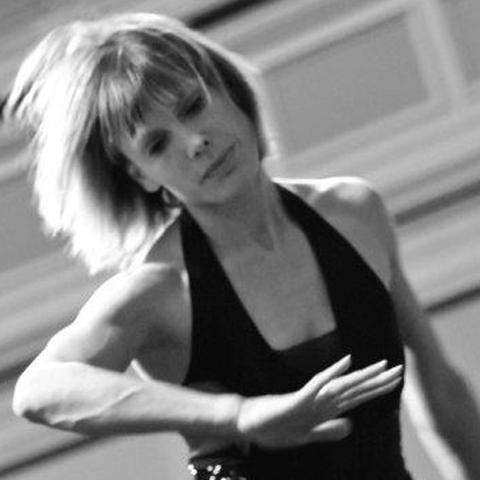How do we dance with those whose major challenge is in movement?
Date posted: 17 April 2018
We dance to express our lives. For some, this can be a life with Parkinson’s. Dance artist Ruth Kent explains how, in growing a dance class in Aberdeen, she wanted to shape content around real life experiences

I’ve worked as a community dance artist for more than 15 years, with everyone from babies to 104-year-olds. I’ve developed projects and led inclusive performance groups in the north-east of Scotland. How, then, is Dance for Parkinson’s any different?
In working with specialist communities I find more and more that what connects us in dance is what connects us as people. Dance is not something separate from the rest of life; we dance to express our lives, our interests, our emotions and personalities. How we move is how we feel.
So there was a certain fear in approaching dance with people whose major challenge is in movement. I was also curious as to how dance could enable, engage and connect people who were at risk of being left out.
At the time of writing we have delivered 14 dance for Parkinson’s sessions in Aberdeen, working with a group that was keen from the outset – word had spread about these kinds of classes in Edinburgh and Glasgow and the granite-city wasn’t going to miss out!
Our group bonded quickly. I came to understand the importance of that cup of tea after every class; this was often the time people entrusted valuable information about living with Parkinson’s.
As we learned about our participants, so we were able to shape class content around real life experiences; for example, several of our guys had served in the RAF and this led to a full sequence around ‘Taking Flight.’
“The music carries you along and supports the movement… and I become fully immersed and caught up in the whole movement”
Live music is a key element. It’s also been something of a learning curve for myself and our musician to get to grips with. Conditioned in using pre-recorded music, the possibilities are now opened up and there is room for a spontaneous, creative interplay between music and movement. We’re still finding out how to make this work to best effect.
I was extremely nervous on my first session. There was just so much to think about and I was anxious to get it all right, to teach the ‘perfect’ class. This was challenged almost immediately when the first person through the door had an unexpected nose bleed!
The seated part of the class always felt a little ‘safer’ than the standing part, where a level of unpredictability came into play. I worried about when to move the chairs, whether my standing sequences would work, whether someone would fall. I definitely played it a little safe as a result.
“Before coming to class I was apprehensive, thinking I would see my ‘future’ but I’ve found something completely different: a class of very positive people with various degrees of Parkinson’s"
I now realise it’s a work in progress. There will be things that don’t work so well. Like when I decide to sing and it’s completely off-key with the piano!
The training with People Dancing, ENB and Scottish Ballet, has provided a framework for a successful class, making sure there’s solid planning and preparation behind every session. After that the creative journey has to unfold in whatever surprising ways it needs to.
I’ve been lucky to work with some wonderful colleagues, who continue to inspire and push me to try new approaches. Remembering to connect with myself as a creative artist is important as it’s through new challenges, new connections and new groups that we continue to grow.
Ruth Kent
Dance Artist
Ruth Kent is pictured in black and white.
Our colour image shows a Dance for Parkinson's session at the People Dancing international conference, Glasgow 2017. Photograph by Rachel Cherry.